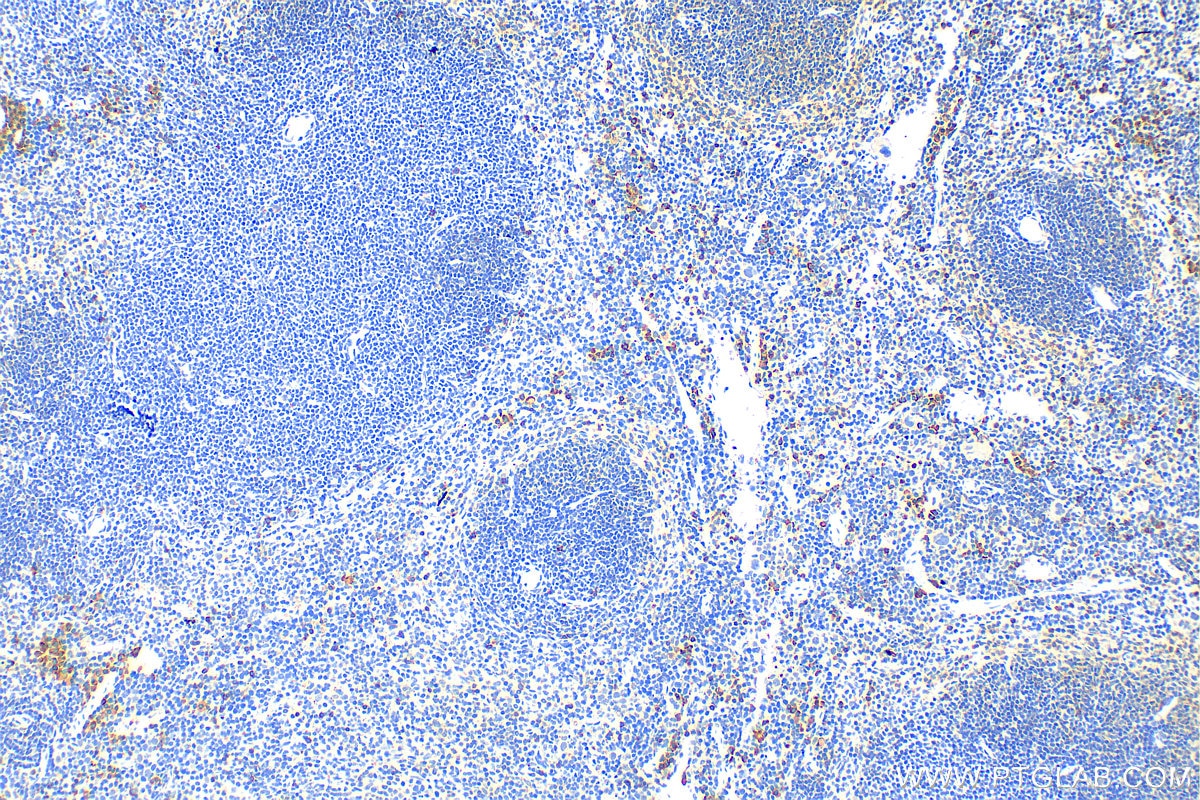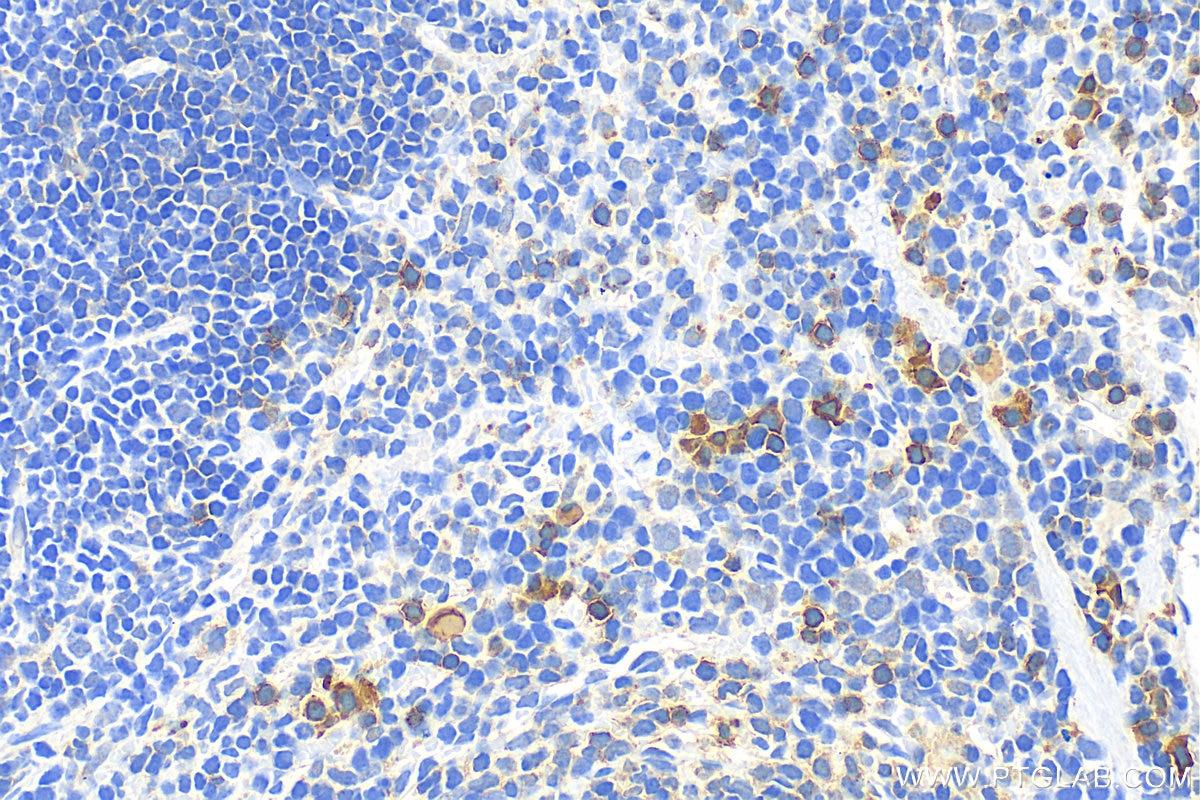Tested Applications
| Positive IHC detected in | mouse spleen tissue Note: suggested antigen retrieval with TE buffer pH 9.0; (*) Alternatively, antigen retrieval may be performed with citrate buffer pH 6.0 |
Recommended dilution
| Application | Dilution |
|---|---|
| Immunohistochemistry (IHC) | IHC : 1:200-1:800 |
| It is recommended that this reagent should be titrated in each testing system to obtain optimal results. | |
| Sample-dependent, Check data in validation data gallery. | |
Product Information
31984-1-AP targets NKp46/NCR1 in IHC, ELISA applications and shows reactivity with mouse samples.
| Tested Reactivity | mouse |
| Host / Isotype | Rabbit / IgG |
| Class | Polyclonal |
| Type | Antibody |
| Immunogen |
Recombinant protein Predict reactive species |
| Full Name | natural cytotoxicity triggering receptor 1 |
| Calculated Molecular Weight | 37kDa |
| GenBank Accession Number | NM_010746.3 |
| Gene Symbol | NKp46/NCR1 |
| Gene ID (NCBI) | 17086 |
| RRID | AB_3670165 |
| Conjugate | Unconjugated |
| Form | Liquid |
| Purification Method | Antigen affinity Purification |
| UNIPROT ID | Q8C567 |
| Storage Buffer | PBS with 0.02% sodium azide and 50% glycerol, pH 7.3. |
| Storage Conditions | Store at -20°C. Stable for one year after shipment. Aliquoting is unnecessary for -20oC storage. 20ul sizes contain 0.1% BSA. |
Background Information
NKp46, also known as NCR1 or CD335, is an Ig-like superfamily cell surface receptor that is highly conserved in mammals (PMID: 22021440). NKp46 is a type I transmembrane glycoprotein consisting of two extracellular Ig-like domains, a transmembrane domain, and an intracellular tail (PMID: 9730896). It is expressed on NK cells, rare T-cell subsets and a mucosal population of NKp46+ innate lymphoid cells (PMID: 9730896; 22021440). NKp46 is the major triggering receptor involved in the natural cytotoxicity (PMID: 10359120; 10092106; 15356098).
Protocols
| Product Specific Protocols | |
|---|---|
| IHC protocol for NKp46/NCR1 antibody 31984-1-AP | Download protocol |
| Standard Protocols | |
|---|---|
| Click here to view our Standard Protocols |






